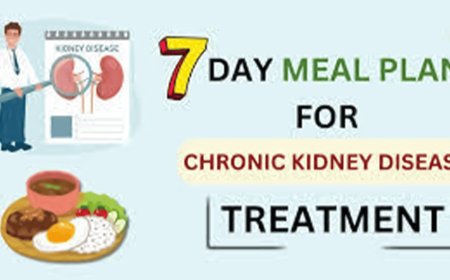NURS FPX 4010 Assessment 4: Innovative Strategies for Solving Community Health Issues
Explore a step-by-step approach to NURS FPX 4010 Assessment 4. Learn how to identify a pressing health issue and propose a culturally competent, evidence-based solution for improved outcomes.

Nurses are not only care providers but also change-makers in healthcare systems. NURS FPX 4010 Assessment 4 focuses on equipping nursing professionals with the skills to address real-world health problems that affect individuals, families, or entire communities. This assessment emphasizes practical problem-solving, evidence-based planning, and outcome measurement.
In this guide, well explore how to choose a relevant health issue, create a robust intervention plan, integrate ethical and cultural insights, and define measurable impacts that align with organizational goals.
Step 1: Define a Health Problem
Start by identifying a current, high-impact issue that affects health outcomes at the individual or population level.
Examples:
-
Postpartum depression in underserved communities
-
Smoking among teenagers
-
Chronic asthma in urban school-aged children
-
Food insecurity in immigrant populations
Sample Issue:
A suburban school district reports increasing absenteeism among students with unmanaged asthma. Environmental triggers and inconsistent medication use are major concerns.
Choose a topic with sufficient research support and measurable indicators.
Step 2: Conduct a Needs Assessment
Evaluate the scope and depth of the health issue. Include:
-
Epidemiological data
-
Risk factors and demographics
-
Social determinants like housing, income, and education
-
Health system gaps
Utilize:
-
CDC and WHO reports
-
State and local health data
-
Peer-reviewed studies and surveys
This assessment ensures your solution is data-driven and well-justified.
Step 3: Design an Evidence-Based Solution
Develop a clear and actionable plan based on current best practices. It should be tailored to the selected populations specific needs.
Elements of the Plan:
-
Goal: Decrease school absenteeism from asthma by 40% in 9 months
-
Strategies: Asthma education workshops, nurse-led screenings, home assessments, medication adherence apps
-
Partners: School nurses, parents, pediatricians, community health workers
-
Logistics: Funding for air purifiers, bilingual materials, mobile health platforms
Back each element with 46 scholarly articles showing proven outcomes.
Step 4: Analyze Benefits and Risks
Discuss how your solution will improve outcomes and align with public health goals.
Benefits:
-
Better asthma control and fewer ER visits
-
Enhanced school performance and quality of life
-
Reduced family stress and medical costs
Risks:
-
Non-compliance with treatment
-
Potential funding shortages
Present a mitigation plan to address risks proactively.
Step 5: Address Ethical and Cultural Aspects
Ensure your plan reflects inclusivity and follows legal and ethical standards.
Ethical Principles:
-
Justice: Equal access to health education and tools
-
Autonomy: Empowering families to manage care independently
-
Beneficence: Promoting well-being
Cultural Considerations:
-
Use of translators
-
Respect for cultural health beliefs
-
Flexible timing for working families
Legal Guidelines:
-
FERPA (student privacy)
-
Informed consent for screenings and data collection
Step 6: Build a Communication Strategy
Stakeholders:
-
School board and administrators
-
Healthcare professionals
-
Parents and caregivers
Tactics:
-
Town hall meetings
-
Infographics and newsletters
-
Secure parent portals and email campaigns
Keep the message clear, accessible, and relevant to each audience.
Step 7: Establish Outcome Metrics
You need to measure the impact of your intervention through both qualitative and quantitative metrics.
Key Performance Indicators:
-
Asthma-related absenteeism rates
-
Inhaler usage reports
-
Knowledge test scores pre- and post-education sessions
Feedback Tools:
-
Parent satisfaction surveys
-
Teacher and nurse evaluations
-
Follow-up interviews
Adjust the strategy every quarter based on data.
Example Summary Table
| Component | Description |
|---|---|
| Health Problem | Childhood asthma in suburban schools |
| Root Causes | Poor medication adherence, air quality issues |
| Goal | Reduce absenteeism by 40% in 9 months |
| Solution | Education, screenings, tech reminders, resources |
| Stakeholders | Schools, parents, pediatricians, nurses |
| Ethics | Language inclusion, equity, consent practices |
| Evaluation | Attendance logs, surveys, follow-ups |
Final Thoughts
NURS FPX 4010 Assessment 4 is a comprehensive exercise in leadership and innovation. It challenges nursing students to move beyond theory and apply real-world strategies to healthcare problems. Through research, planning, cultural awareness, and impact measurement, youll develop a nursing intervention that not only meets academic standards but could also transform lives.
Take this opportunity to showcase your critical thinking, advocacy, and organizational skills. Whether its in a hospital, school, or community, your voice as a nurse can lead lasting change.





































